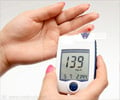At the University of Adelaide, researchers have discovered that a common treatment for people with type 2 diabetes could cause longer-than-normal periods of the low blood sugar reaction hypoglycemia.

A team of researchers at the University of Adelaide's School of Medicine has investigated the impact of this combination therapy on how quickly the stomach empties after eating food.
The results, now published online in the journal Diabetes Care, show that the combination of GLP-1 and insulin slows down the rate of food being emptied from the stomach.
"Low blood sugar levels usually cause the stomach to empty rapidly, however in the group studied on GLP-1 therapy it emptied no more quickly than at normal blood glucose levels," says lead author and University of Adelaide PhD student Dr Mark Plummer.
"This is a concern because it means that a significant amount of food, and therefore glucose being consumed by a diabetic patient to prevent or treat hypoglycemia, is being retained in the stomach. This would have the effect of extending hypoglycemia and potentially putting the patient at risk."
Dr Plummer says the sample group of 10 people was relatively small, "but statistically the results were significant".
Advertisement
"There were no life-threatening effects on the patients we studied, but their symptoms included sweating, palpitations and visual disturbance."
Advertisement
Source-Eurekalert















